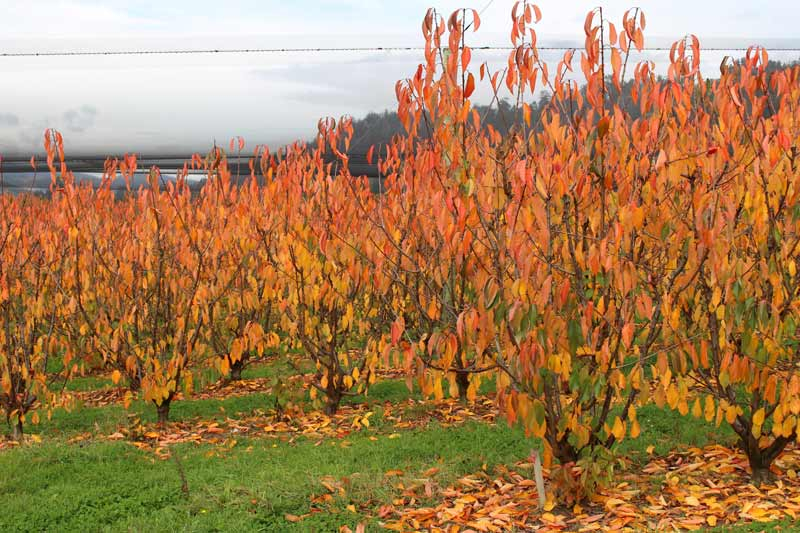Autumn brings change to cherry trees—but what happens?
In simple terms, nutrients left in the leaves are being downloaded into the roots and stored there until spring.
If post-harvest applications of fertiliser have been applied to the soil with spreaders or fertigation, or to the tree by foliar applications, then as cooler days and nights begin, so does the transformation of colour change in the leaves as the nutrients travel to the roots for seasonal storage.
Nutrient storage and spring growth
After leaves have dropped from the trees and nutrients have travelled to the roots for storage, any unwanted limbs can be removed without negatively affecting the tree’s nutrient storage.
Removing unwanted limbs may well increase the proportion of nutrients available to push new growth in spring.
Remember that large cuts to the tree made after harvest are de-invigorating, while large cuts made to the tree in spring are invigorating and will assist regrowth and replacement limbs to form.
More wet weather forecast
The weather in most cherry growing regions has been cooler than average, and we are heading into a 'la Nina' weather pattern where we can expect a wetter than average autumn and winter.
Unfortunately this is now happening, as large areas of New South Wales and Queensland are under water.
Coping with waterlogged soils
Should your orchard be waterlogged while leaves are still active on the trees (have not yet changed colour) then the trees are not dormant and could be adversely affected by a waterlogged soil.
Waterlogging results in a lack of oxygen in the soil, and trees may show symptoms as if they were too dry.
Short-term drainage can be effective in moving water more quickly from the soil. Tools such as a rotary drainer can be very useful in moving surface water out of the orchard quickly if there is sufficient slope for run off.
Spiked rollers can also be effective in allowing oxygen into the rootzone.
Should excess water stay in the rootzone for too long, then small fibrous roots will die and the tree may suffer as a result.
Look for possible problems at the end of a row where water may build up—especially where tractor and spray pump wheel tracks trap water. When this happens, free the water and allow it to move away from the root zone.
Furthermore, educate your staff to be on the lookout for drainage problems, and teach them to act on it, as it will pay dividends for the health of the orchard.
See this article in Tree Fruit March 2021






















